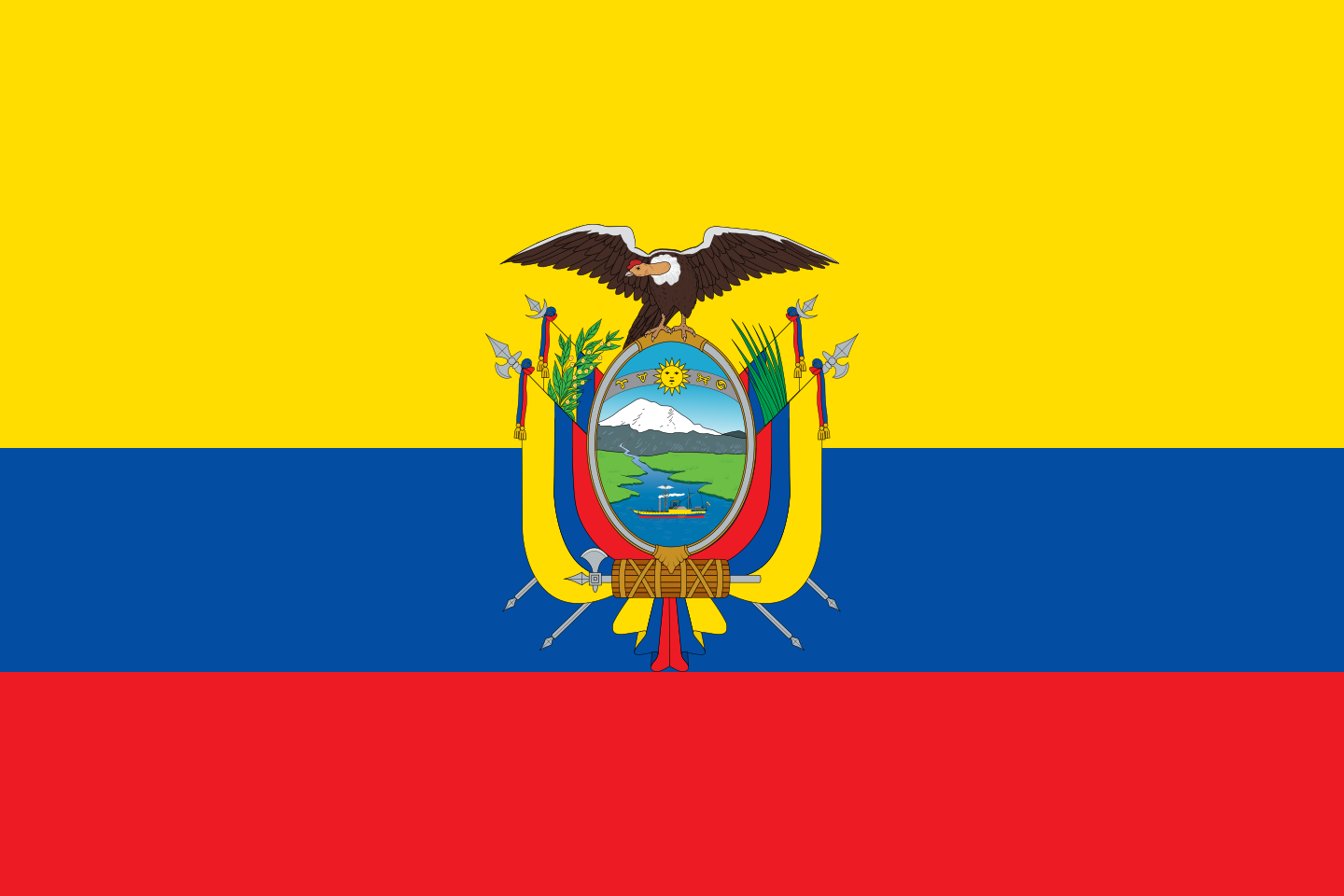The Ecuador flag features three primary colors: Yellow, Blue, Red. The table below showcases the common and popular codes for these colors in HEX, RGB, and CMYK formats, along with Pantone (PMS), RAL, and NCS (Natural Color System) references. Remember, HEX and RGB codes are ideal for digital projects and web design (including HTML and CSS), while CMYK values are tailored for printing purposes.
The flag of Ecuador is a vibrant and symbolic emblem representing the country's heritage, values, and natural beauty. It consists of distinct colors and elements that convey deep historical and cultural significance.
Design and Elements:
Background:
- Colors: The flag features three horizontal stripes: yellow, blue, and red, with a coat of arms centered on the flag.
- Proportions: The flag's width-to-length ratio is 2:3.
Horizontal Stripes:
- Yellow Stripe: Occupies the top half of the flag.
- Blue Stripe: Positioned below the yellow stripe, taking up one-quarter of the flag's height.
- Red Stripe: Positioned below the blue stripe, also taking up one-quarter of the flag's height.
Coat of Arms:
- Position: Centered on the flag, spanning across the blue and red stripes.
- Design: The coat of arms features a shield with a depiction of Mount Chimborazo, the highest peak in Ecuador, and the Guayas River, symbolizing the country's natural beauty. A condor, representing power and protection, spreads its wings above the shield. The shield is flanked by national flags and fasces, symbolizing unity and republican values. Below the shield, there is a laurel wreath and a palm leaf, signifying victory and peace.
Symbolism:
Yellow Stripe:
- Representation: The yellow color symbolizes the abundance and fertility of the land, as well as the wealth of the country’s natural resources.
Blue Stripe:
- Representation: The blue color represents the sky and the sea, reflecting Ecuador's geographical location and its connection to both the Pacific Ocean and the vast skies.
Red Stripe:
- Representation: The red color symbolizes the bloodshed of the country's heroes and martyrs who fought for Ecuador's independence and liberty.
Historical Context:
The current design of the Ecuadorian flag was officially adopted on September 26, 1860. Its design is influenced by the flag of Gran Colombia, a former federation that included present-day Ecuador, Colombia, Venezuela, and Panama. The colors of the flag were inspired by the flag of Gran Colombia and the ideals of independence and freedom championed by Simón Bolívar.
Overall Significance:
The flag of Ecuador is a powerful symbol of national pride, unity, and the country's rich cultural and natural heritage. Its colors and elements encapsulate the spirit of the Ecuadorian people, their history of struggle and resilience, and their aspirations for peace and prosperity.
The flag serves as a unifying symbol for the nation, representing shared values and identity. It is prominently displayed during national holidays, official events, and international gatherings, symbolizing Ecuador's sovereignty and its place in the global community.
